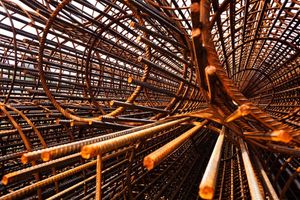The Title 24 energy code will be updated on January 1, 2026, greatly affecting California's building sector. The California Energy Commission is responsible for this adjustment every three years. It aims to help the state reach its lofty climate and energy goals. For contractors, builders, and especially people who work in insulation, knowing the details of these changes is not just a matter of following the rules; it's also important for project success, keeping costs down, and keeping clients happy in the long run.
The California energy code, titled Title 24, sets minimum standards for energy efficiency in new and old buildings. The code covers many building systems, such as lighting, HVAC, and solar integration. However, this most recent amendment focuses heavily on insulation and the performance of the building envelope. The 2026 code cycle adds new standards for insulation contractors and builders that will affect the materials used, how they install them, and how long projects take.
One of the biggest changes is that several climate zones' required insulation R-values have increased. R-value measures how well a building keeps conditioned air inside and stops heat from flowing through it. The new rule says homes and businesses' walls, roofs, and floors must have R-values around 10% greater than the 2022 criteria. For instance, a typical 2x6 wall assembly in Southern California that previously used only cavity insulation will now require both cavity and continuous insulation to meet the new minimum standards.
The rule also makes it harder to block off air, lowering the maximum amount of air that can leak out of a house from 5 air changes per hour at 50 Pascals (ACH50) to 4 ACH50. This implies that builders can no longer simply seal spots after installing drywall. Instead, they have to put in continuous air barriers from the start. To stop energy loss and ensure the building passes blower-door testing, every window, door, and utility penetration must be carefully sealed.
Most new homes need to install heat-recovery or energy-recovery ventilators (HRVs or ERVs), which bring in fresh air while using as little energy as possible. These systems assist in fulfilling efficiency goals and improving indoor air quality, which is becoming a bigger concern for homes and building occupants. It will take careful planning to combine HRVs with ERVs so that insulation and air-sealing methods don't accidentally make ventilation less effective.
The 2026 update also adds stricter testing for HVAC systems and ducting outside the building envelope. Before the final inspections, contractors must check that the air conditioners, furnaces, and duct runs are all working properly and are tight enough. The law also adds more criteria for solar panels on new residences and changes the rules for lighting controls to favor LEDs and smart switches.
The California 2025 building code version that applies to a project depends on when the permit application is submitted. For instance, submitting designs in late December 2025 will allow a project to proceed using the 2022 requirements, potentially saving weeks of redesign and thousands of dollars in materials. On the other hand, any permit filed on or after January 1, 2026, must follow the new, stricter rules. This means contractors who want to avoid expensive delays and last-minute alterations must plan and talk to insulation suppliers early on.
Experts say contractors and builders should get their insulation suppliers and materials partners involved in the design phase as soon as possible. These experts keep up with all the code cycles and can help you with assembly standards, choosing the right products, and the best ways to install them. Contractors may ensure that their projects pass blower-door and duct-leakage testing on the first go by working with providers who know what they're doing. This lowers the chance of failed inspections and having to complete the work again.
Because of higher insulation R-values and stricter air-sealing requirements, homes and businesses will be more pleasant, quieter, and cheaper to heat and cool. Better ventilation rules will help make indoor spaces healthier, and strict HVAC and solar requirements will further reduce energy use and greenhouse gas emissions. These adjustments are another step toward making California's built environment more sustainable.
Insulation contractors know what they must do to succeed: stay current, plan, and work closely with design teams and insulation suppliers. This ensures every project satisfies the most recent California insulation standards and gives clients and communities long-lasting value.
For more information on the upcoming code changes, contractors and builders can explore the California Energy Commission’s Title 24 resource page or consult their local insulation experts.
Media Contact
Company Name: Prosource Insulation
Contact Person: Joe Pinto
Email: Send Email
Address:21314 Lassen St
City: Chatsworth
State: CA 91311
Country: United States
Website: https://prosourceinsulation.com





